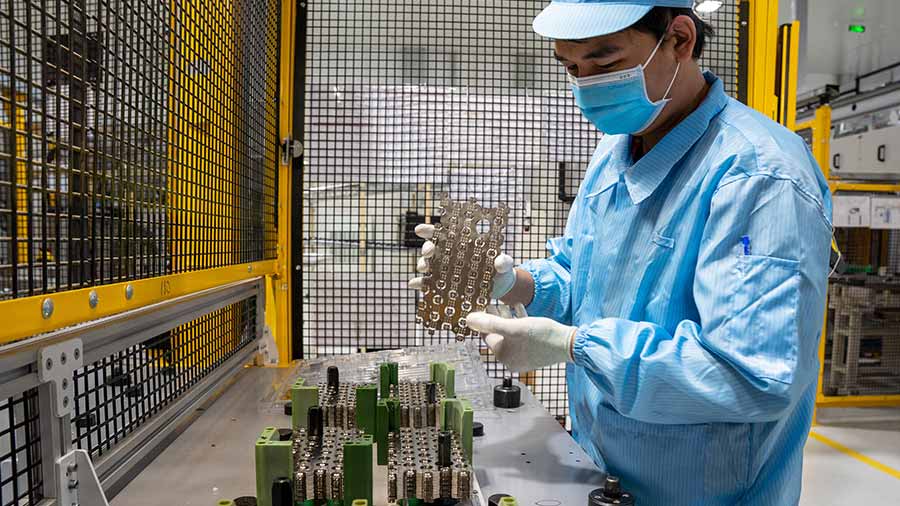Supporting Industry: From “Auxiliary” Role to Strategic Choice for Vietnam Economy
No longer confined to a secondary role in manufacturing, Vietnam’s supporting industry is now recognized as a cornerstone of the country’s drive toward industrial self-reliance. However, realizing this strategic goal still requires both policymakers and businesses to overcome major challenges in technology, capital, human resources, and implementation.

Illustrative photo
From policy direction to business opportunity
After nearly a decade of implementing the Supporting Industry Development Program (2016-2025), Vietnam now has more than 6,000 enterprises participating in supply chains, compared to just a few hundred at the start. This progress demonstrates that the supporting industry has advanced beyond an auxiliary role to become a strategic pillar of national industrial development. Policy has driven this transformation. Decision 68/QD-TTg (2017) provided the first true momentum to position the sector as a core industry, while the draft Law on Key Industries identifies supporting industry as one of five national priorities. A proposed Central Support Fund, equivalent to about 1% of GDP, if approved, would help firms access incentives more efficiently.
Policy is also being decentralized to local governments. The Ministry of Industry and Trade is empowering provincial authorities to take greater responsibility for approving incentives, providing technology consulting, and connecting supply with demand. Administrative procedures are being digitalized, allowing businesses to submit applications, obtain approvals, and receive certificates online, which greatly reduces time and transaction costs. Policy has evolved, but the key question is whether businesses are ready to seize the opportunity.
High ambitions, uneven capabilities
Positive signs are emerging as more Vietnamese firms integrate into global value chains. VinFast Auto Ltd. has achieved a localization rate of over 60%, while Truong Hai Auto Corporation (THACO Group) has built an ecosystem attracting hundreds of supporting suppliers. Around 300 Vietnamese companies were listed in the Japan External Trade Organization (JETRO)’s 2024 White Paper, tripling the number recorded in 2011.
Yet the sector’s new status also brings mounting pressure. According to Vietnam Association for Supporting Industries (VASI) Vice Chair Bui Thi Hong Hanh, gaps remain wide in technology, management, and product quality. Many high-value contracts from major corporations cannot be awarded to Vietnamese SMEs because they still fall short of international standards.
The experience of JK Industrial Company, a 20-year supplier to Honda, Yamaha, and Piaggio, illustrates that technology and manufacturing precision remain key bottlenecks. Vice General Director Vu Dang Khoa said, “To move from motorcycle parts to auto or aerospace components, companies must participate from the design stage and collaborate with partners’ R&D teams.” JK invited Japanese and Korean design engineers to Vietnam to align product designs with actual production capabilities, cutting defects and costs while strengthening its position in the supply chain.
This shows that while policy can open the door, only businesses with sufficient capacity can truly step through it.
Shifting from broad support to strategic focus - a test for the next phase
The Ministry of Industry and Trade acknowledges that the support program for 2016-2025 was spread too thin, while the goal of helping hundreds of firms improve technology did not meet expectations. Importantly, over 90 % of incentive recipients were foreign-invested enterprises (FDIs), raising the question: was policy targeting the right place?
Accordingly, the next-phase strategy will focus on high-impact areas such as precision mechanics, automotive components, electronics and new materials. At the same time, mechanisms that permit “acceptance of risk in research & development” under Resolution 57 NQ/TW are seen as a mindset shift, giving space for businesses to innovate and invest in R&D rather than merely do contract manufacturing.
Supporting industry now holds a new position, yet to become the true backbone of the economy it will require not only sound policy but also strong and proactive enterprises that connect and adopt core technologies. The success of the next phase will be the proof that Vietnam can achieve its goal of industrial self-reliance.








